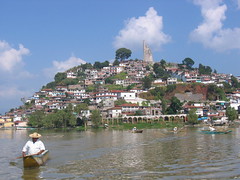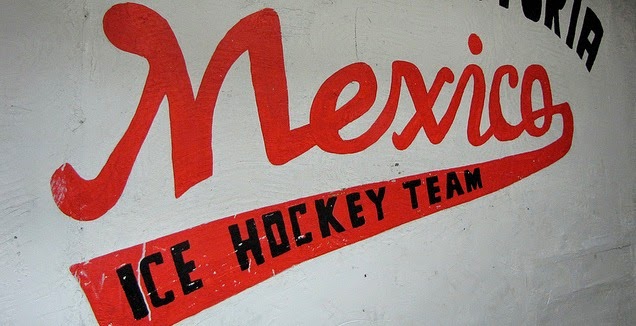
BY DAVID AGREN/Special to The Herald Mexico
El Universal
October 31, 2005
PATZCUARO, Michoacan - Caesar López, 13, carved a jack-o'-lantern from a chilacayote gourd and brought it to Patzcuaro's Plaza Grande each night during the weeks preceding Dia de los Muertos, or Day of the Dead.
Once there, instead of accumulating candy by calling out "trick or treat" as his counterparts north of the border might do, he collected money by asking bystanders, "Give me something for my chilacayote."
And many did. On a good night, said Caesar, he made up to 20 pesos with his gourd jack-o'-lantern.
When asked to explain the difference between Halloween and Dia de los Muertos, he responded innocently, "It's the same thing."
Over the past 20 years, Halloween influences have crept into Patzcuaro, a colonial city where the indigenous Purepecha build impressive Dia de los Muertos altars and hold nighttime grave-site vigils to honor their deceased loved ones.
Although vestiges of Dia de los Muertos abound, many local stores now adorn their premises with images of pumpkins, black cats and bats. In Patzcuaro's seasonal Dia de los Muertos market, virtually every stall offered Halloween items for sale: pumpkin-shaped sweets and witches' hats occupied spots next to sugar skulls and pan de muerto, a popular holiday bread. A few stalls almost exclusively stocked Halloween merchandise something that irritated a few longtime vendors who sell only traditional Dia de los Muertos supplies.
"Probably 50 percent of the things here are for Halloween," said vendor Jesús García, who works alongside his grandmother, a 47-year veteran of the market.
He complained that the city government, which regulates the market, doesn't enforce the rules, which García said only allows vendors to sell traditional items.
Veronica Adame, a vendor in the market who sells chocolateshaped pumpkins along with chocolate popsicles featuring images of popular cartoon characters like Sponge Bob, Shrek and Mickey Mouse, defended her inventory selection, saying many customers come looking for nontraditional items.
"They're usually looking more for skulls, but many (customers) are also searching for pumpkins," she explained.
"The kids ask for it," added Juan Carlos García, another vendor selling Halloween items.
The advent of foreign television programming and the large number of migrants returning from time abroad in the United States are the most probable sources of Halloween's growing popularity in Mexico. The pagan holiday also has great appeal to Mexican children, who are usually left out of traditional Dia de los Muertos celebrations, said Shawn Haley, a Canadian anthropologist who has studied the Mexican holiday.
"Halloween in Mexico is becoming a way to involve the children," he explained in an interview from his office at Red Deer College, in Red Deer, Alberta.
"Up until this point, Dia de los Muertos festivities didn't involve children a whole lot."
In some towns where Haley researched, parents initiated Halloween activities in order to include their children in Dia de los Muertos.
Jorge Tapia, a pharmaceutical company representative from Morelia who was visiting Patzcuaro on business, planned to celebrate both holidays. He bought sugar skulls emblazoned with the names of his wife and infant son for an altar in his home, but he also planned to dress his son in a skeleton costume for a Halloween party.
"I like to take the best of both (events)," he explained.
Despite the arrival of Halloween, Dia de los Muertos still thrives in smaller towns, to the point of becoming an important part of their regional economies. Michoacan tourism officials estimate more than 100,000 tourists will visit the state for Dia de los Muertos festivities with the majority heading to Patzcuaro and nearby Janitzio Island. Approximately 30 percent of the tourists will come from foreign countries.
Looking into the future, Haley predicts "a heavy tourist influence" will keep many Dia de los Muertos traditions strong, but will also change the holiday.
"(Dia de los Muertos) going to become a bit more like our Christmas, with less solid beliefs," he said. "But I think everyone's going to still do it."
From the Miami Herald, Mexico Edition.

No comments:
Post a Comment